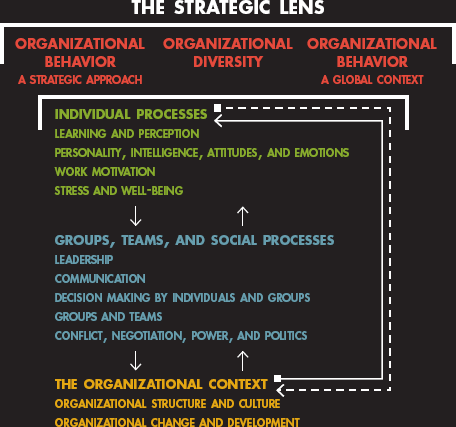Part III. groups, teams, and social processes

In Part II, we examined individual-level processes that affect organizational behavior. In Part III, we explore group, team, and social processes, which can directly or indirectly affect behavior in organizations. Knowledge of each of these types of processes helps managers achieve and maintain a competitive advantage. Therefore, each has important strategic implications for the organization.
Chapter 8, the first chapter in Part III, discusses various concepts related to leadership and explains what makes a leader effective. In the chapter, we pay special attention to the effects of leadership on motivation and productivity.
Chapter 9 explores communication in organizations. Communication is critical for achieving objectives because it provides the information on which people in organizations act. In addition, leaders communicate in order to motivate individuals and teams and to obtain the behavior desired.
Chapter 10 describes individual and group decision making. Decision making is a critical dimension of leadership and has substantial effects on organizational behavior. In Chapter 11, we turn to an examination of group dynamics and teams. Because organizations make frequent use of teams (groups of associates integrated to accomplish specified goals), understanding and managing teams can be essential to organizational success. Finally, ...
Get Organizational Behavior, Third Edition now with the O’Reilly learning platform.
O’Reilly members experience books, live events, courses curated by job role, and more from O’Reilly and nearly 200 top publishers.

